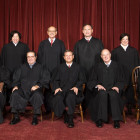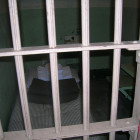
High Court Ruling on Juvenile Life Without Parole Could Impact Many
|
Hundreds of people like Alabama’s Evan Miller are newly-eligible to appear in front of sentencing judges and perhaps parole boards, as the U.S. Supreme Court strikes down certain life sentences without parole that were handed out to juvenile offenders. As a drug-addicted, abused, neglected minor in and out of foster care, 14-year-old Miller and a friend, killed his mother’s drug dealer in 2003 after an evening of sharing drink and drugs. Under a mandatory sentencing law that ignores mitigating factors, Alabama sent Miller to prison for life without the chance of parole. But now minors like Miller must be allowed to present mitigating circumstances and the sentencing judge or jury must pay attention, the court ruled on July 25 in Miller v. Alabama. “Its kind of a new procedure that I think is going to be imposed in some jurisdictions,” said Richard Broughton, Assistant Professor of Law at the University of Detroit’s Mercy School of Law.






